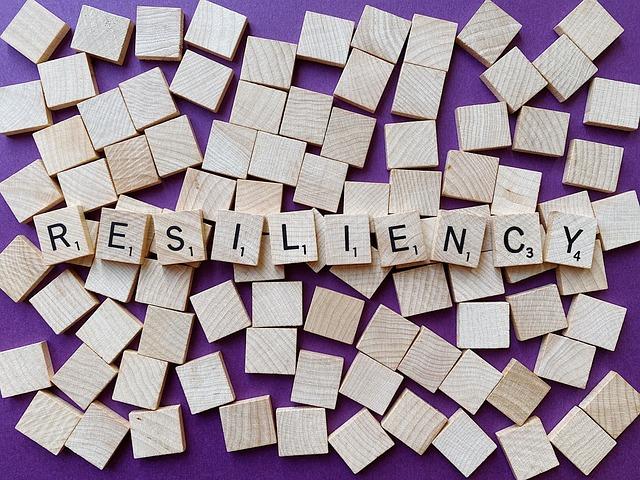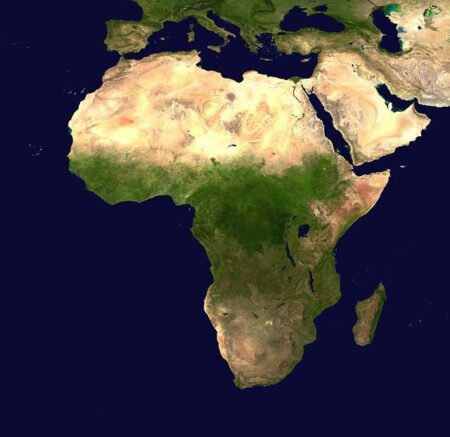Introduction
As the world grapples with the pressing realities of climate change and shifting demographic trends, Sub-Saharan Africa stands at a critical crossroads, facing unique challenges that threaten the futures of its most vulnerable population—children. A new report by UNICEF highlights the intricate interplay of environmental degradation, population growth, and economic instability in the region, laying bare the urgent need for extensive strategies to safeguard the well-being and rights of children. With more than 600 million children currently living in Sub-Saharan Africa, the ramifications of inaction could be profound. From increasing exposure to extreme weather events to a growing pressure on educational systems and healthcare, the region’s youth are at the forefront of these changes. This article delves into the findings of UNICEF’s report,exploring the multifaceted issues at hand and the critical measures that must be taken to ensure a brighter,more sustainable future for generations to come.
The impact of Climate Change on Child Health and Well-being in Sub-Saharan Africa
As climate change intensifies,the ramifications on child health and well-being become increasingly severe,especially in Sub-Saharan Africa. this region faces a catastrophic convergence of environmental disruptions, leading to increased prevalence of diseases, malnutrition, and mental health struggles among children.Key factors contributing to these challenges include:
- Extreme Weather Events: Floods and droughts disrupt food systems, resulting in nutritional deficits that hinder physical and cognitive advancement.
- Vector-borne Diseases: Rising temperatures expand the habitats of disease-carrying insects, leading to higher incidences of malaria and dengue fever among vulnerable populations.
- Water Scarcity: Limited access to clean water elevates the risk of waterborne diseases, further compromising children’s health.
Moreover, demographic shifts—such as increasing urbanization and a burgeoning youth population—exacerbate the impact of climate change. Urban areas are often ill-equipped to handle the influx of people, straining health resources and social services. A recent analysis highlights critical implications:
| Challenge | Impact on Children |
|---|---|
| Shelter and Housing | increased exposure to violence and health risks due to inadequate living conditions. |
| Education Disruption | Frequent school closures during natural disasters hinder educational progress. |
| Economic Strain | Families face financial instability, limiting access to essential healthcare and nutrition. |

navigating Demographic Shifts: The Urgent Need for Educational Reforms
The rapidly changing demographics in Sub-Saharan Africa necessitate immediate and innovative educational reforms to ensure that children are equipped for the future. With a meaningful youth population and increasing urbanization, conventional education systems often fail to meet the diverse needs of today’s learners. To address this challenge, it is crucial to implement programs that emphasize inclusive curricula, technical skills training, and critical thinking. These reforms will not only help bridge the gap between education and employment but will also prepare the youth to adapt to the evolving demands of a global economy.
Moreover, the intersection of climate change and demographic shifts presents an urgent need for community-based educational initiatives that focus on sustainability. Schools should serve as hubs for teaching young people about environmental stewardship, mobilizing them as agents of change in their communities. Implementing hands-on programs that integrate agricultural practices, renewable energy solutions, and climate resilience strategies can empower children and youth to tackle the local effects of climate change. Creating partnerships with local NGOs and governments will be essential to ensure that these educational initiatives are effectively delivered.

Protecting Vulnerable Populations: Ensuring Access to Basic Services for Children
In Sub-Saharan Africa, the intertwining effects of climate change and rapid population growth pose significant barriers to children’s access to essential services. It is imperative to identify the most vulnerable segments of the population and prioritize their needs to ensure equitable access to health, education, and nutrition. Key factors affecting service delivery include:
- Geographic Isolation: many rural communities lack infrastructure, making service delivery challenging.
- Economic Constraints: High poverty levels limit families’ ability to afford basic services.
- Conflict and Displacement: Ongoing conflicts result in increased vulnerability and disrupted access to essential services.
- Climate-Related Disasters: Extreme weather events hamper existing services and exacerbate health issues among children.
To address these challenges, collaborative efforts among governments, NGOs, and local communities are essential. Strategies must focus on building resilient systems that can withstand environmental and demographic pressures.A sustainable approach may include:
- Investing in Local Infrastructure: Enhancing access roads and communication networks to facilitate service delivery.
- Financial Support Programs: Implementing cash transfer programs to support families in need.
- Community Health Initiatives: Training local health workers to provide immediate care and education.
- Educational Outreach: Creating awareness campaigns about available services and how to access them.

Community Resilience: Leveraging Local Knowledge and Resources for Child Protection
In times of rapid environmental and demographic shifts, harnessing the power of local communities becomes essential for effective child protection. community resilience not only strengthens the social fabric but also ensures sustainable methods for safeguarding children’s future. Local knowledge, frequently enough rich and varied, provides unique insights into the challenges faced by families and children in sub-Saharan Africa. By engaging with community leaders and harnessing indigenous wisdom, initiatives can be tailored to meet specific local needs, leading to better outcomes in child welfare.
The use of local resources can enhance the effectiveness of child protection measures.By mobilizing existing community assets—such as schools, health facilities, and traditional support networks—strategies can be developed that are both culturally relevant and impactful. Consider the following resources that can be utilized:
- Community health workers: Trained locals can disseminate facts about child nutrition and health.
- Local education systems: Schools can serve as hubs for child protection education and awareness-building.
- Traditional leaders: Their influence can foster community buy-in and motivate collective action for children’s safety.
Using these tailored approaches helps to build a more resilient community that can adapt to changes while protecting its most vulnerable members.

Innovative Solutions: Harnessing technology to Address Child Welfare Challenges
the complex challenges faced by children in Sub-Saharan Africa require innovative approaches that leverage technology to enhance child welfare initiatives. Mobile technology has emerged as a pivotal tool, enabling rapid communication and data collection. Programs utilizing SMS alerts for health check-ups, community engagement, and reporting child abuse have seen significant successes in urban and rural areas alike. These platforms not only empower local communities but also streamline logistics for social workers,assuring timely interventions when children are at risk. Additionally, the integration of digital learning platforms allows for educational continuity, reaching children in remote regions where traditional schooling is disrupted, thus safeguarding their futures amid uncertainty.
Furthermore, partnerships with tech companies are fostering breakthroughs in data analysis and predictive modeling to address child welfare challenges. By implementing AI-driven solutions, organizations can analyze patterns and identify areas where children are most vulnerable to neglect or exploitation.this data can inform policy-making and resource allocation, ensuring that interventions are targeted and effective. Moreover, the use of blockchain technology for secure identity verification helps protect the rights of children, particularly amidst rising insecurity and displacement. These technological strides not only enhance openness and accountability but also create a holistic ecosystem aimed at nurturing and protecting the lives of children across Sub-Saharan Africa.

Global Collaboration: The Role of International Partnerships in Supporting African Children’s Futures
As Sub-Saharan Africa grapples with the multifaceted challenges posed by climate change and burgeoning demographic pressures, international partnerships have emerged as vital allies in the quest to safeguard the futures of children across the region. Collaborations between governments,NGOs,and global institutions are instrumental in pooling resources,sharing best practices,and creating holistic strategies that address both immediate needs and long-term sustainability. Through targeted initiatives, these partnerships can effectively support key areas such as:
- Education Access: Innovative programs aimed at providing quality education amidst disrupted systems.
- Health Services: Collaborative health interventions to combat prevalent diseases affecting children’s growth and development.
- Nutritional Security: Cross-border initiatives focused on improving food security and nutrition for vulnerable populations.
Additionally, the role of technology in fostering these collaborations cannot be underestimated. By leveraging digital platforms, international partners can enhance communication and coordination, enabling a swift response to the emerging needs of children. Moreover, investment in local capacity building is paramount; as international bodies equip local organizations with the necessary skills and infrastructure, thay create a resilient framework that empowers communities to take ownership of their development. The following table highlights key initiatives that illustrate successful international partnerships:
| Initiative | Partners | Impact area |
|---|---|---|
| Education Empowerment | UNESCO,Local Governments | Quality education |
| Health Outreach | WHO,NGOs | Child Health |
| Nutritional programs | UNICEF,Community Groups | Food Security |

To Wrap It Up
the intersection of climate change and demographic shifts presents Sub-Saharan Africa with a complex array of challenges that directly impact the future of its children. As highlighted in the UNICEF report,the region’s vulnerability to environmental degradation,coupled with rapidly growing populations,necessitates urgent and innovative strategies to safeguard the well-being and rights of the youngest generations. Addressing these challenges requires a multifaceted approach,incorporating sustainable development practices,enhanced education access,and robust healthcare systems,all while prioritizing the voices of local communities. As stakeholders—from governments to NGOs and international organizations—collaborate to build resilience, the future hinges on their commitment to creating a more equitable and sustainable environment for children. Only through concerted efforts can we hope to ensure that this demographic not only survives but thrives in an increasingly uncertain world.







